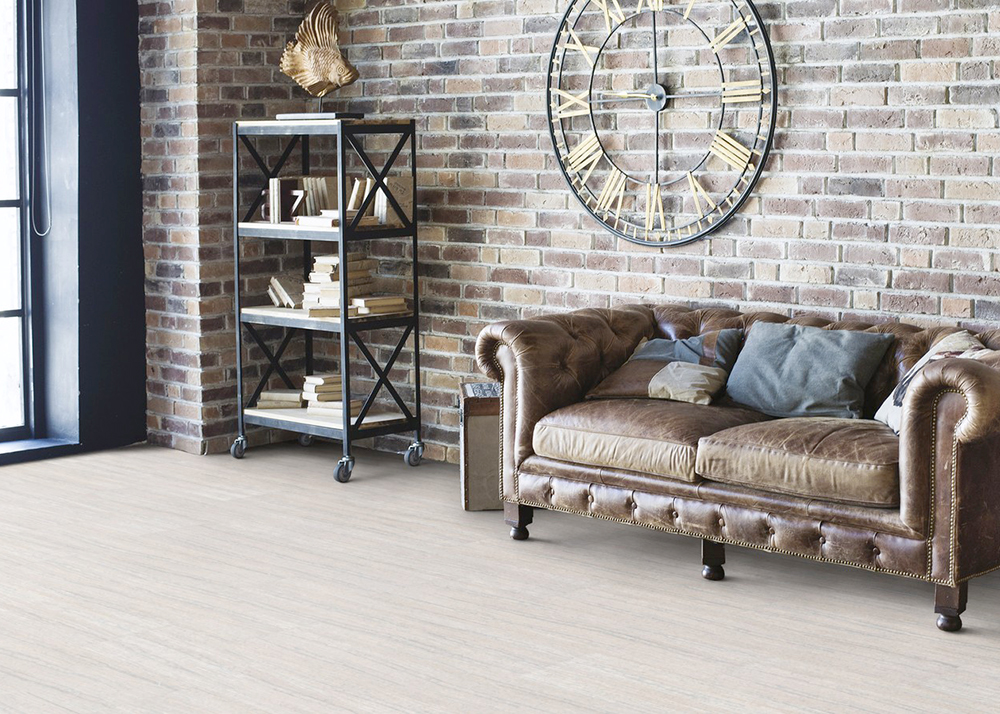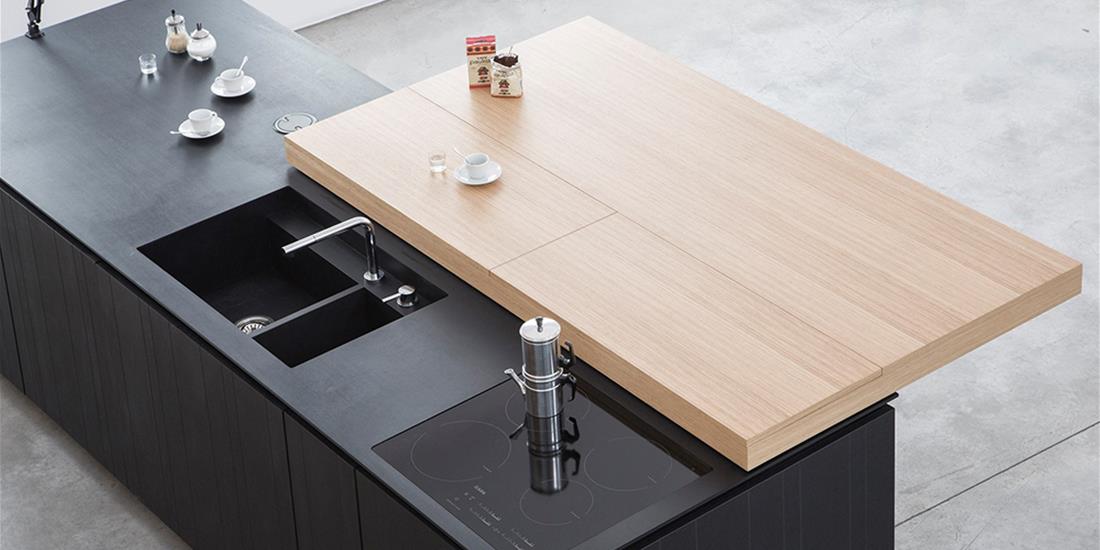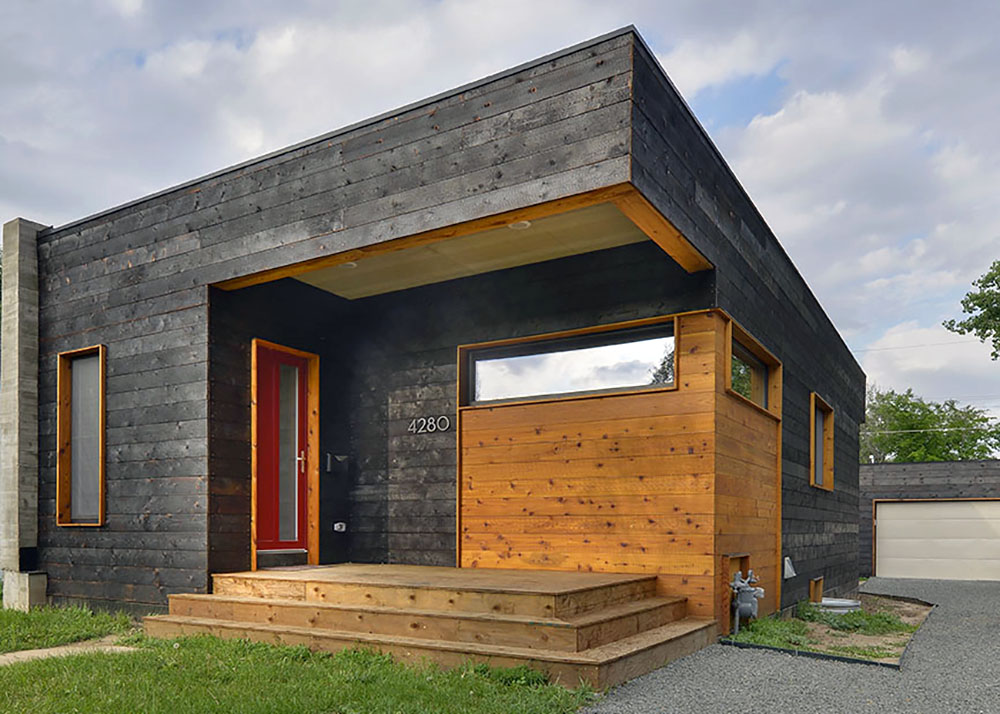
Cork flooring

Paperstone counters

Shou Sugi Ban, © Greenhome Solutions
In an era of "green living" and "sustainable sourcing," it's only natural to apply those characteristics to your home. Unfortunately, buying flooring isn't as simple as picking out an earth-friendly dish soap. There's more to consider and it's often an unfamiliar territory. This summer, the Model Remodel team spoke with Cameron Reith and Pieter Sundgren of Greenhome Solutions (GHS) about their favorite and newest products.
If you haven't been to the showroom, it's worth the visit. I'd go so far as to say anyone thinking about a remodel or new construction should take a peek at their selection. Greenhome Solutions is a family-owned, Seattle-based green building product supplier and showroom. Their friendly and down-to-earth team is happy to introduce homeowners and contractors to the latest green building materials, but some of the products you have to see to believe. As Cameron revealed: "We've poured a lot of blood, sweat, and tears into this place… and we continue to." Their integrity shows with a lineup of great, certified products that they trust.
Cork Flooring
"People underestimate the quality and wear of cork," said Pieter at GHS. We couldn't agree more. Cork is exceptionally quiet underfoot, environmentally friendly, comfortable, and serves as a natural thermal insulator. Typical skepticism includes: it's not going to last, it's going to dent, etc. All flooring has advantages and disadvantages, but the benefits outweigh in most scenarios with cork flooring. Cork flooring is sealed to prevent moisture absorption and staining. Sometimes it can even be refinished like hardwood can.
Take one gander at the selection of cork they have in the store and you'll see just how versatile cork can be. Colors, patterns, and hues can all play a factor into the look of cork. Some of the colored cork doesn't even resemble cork, but rather a tile or painted floor—with plenty of added comfort. Cork flooring patterns are natural and geometric at the same time, for those looking for an edgier option. "Overall, it's one of the healthiest building materials out there," says Pieter.
Recycled Countertops
Though the thought of a recycled countertop may not be as alluring as quartz, you may change your mind once you see the options. You may not find a marble lookalike, but recycled countertops are twice as interesting as traditional options.
For starters, take a look at this countertop in the making: Azure Layering. It's a product by Paperstone, which is created from 50-100% recycled paper and a non-petroleum resin. Manufactured in Washington state with 100 percent made-in-the-U.S. raw materials, most PaperStone products are certified recycled by the Rainforest Alliance to the Forest Stewardship Council® (FSC®) standards. If you think paper could never be a durable countertop option, you're not alone—but you have to hold it in your hands to believe it. It's reminiscent of soapstone and looks like a smooth slate. As a non-porous hard surface, it's surprisingly (but it makes sense!) warmer to the touch than stone alternatives. Like cork, it too comes in a variety of colors.
Another countertop option is Vetrazzo recycled glass countertops, made by hand in Georgia. A slab can be made of 100% recycled glass, but many are approximately 85% of the final material—a significant amount. The countertops use all sorts of specially selected glass: jars, windshields from cars, architectural glass from skyscrapers, pre and post-consumer glass from curbside recycling, and more! The products range in colors and size of the glass particles so you can find a look that fits your style.
Shou Sugi Ban Wood Siding & Paneling
Shou sugi ban is an ancient Japanese method of charring the surface of wood to preserve it, make it fire retardant, and resistant to rot, insects, and decay. The burning process draws out moisture, so the resulting chemical compound protects the wood. Used exceedingly more in modern architecture, the charred wood makes a statement and is easy to spot. While it's used primary for exterior purposes, it can absolutely be used indoors for decorative purposes as well. Shou Sugi Ban wood is installed using the same techniques as traditional siding, so installation costs won't vary. It won't need paint, sealing, or any major care, so it is about as durable of a siding option as you can find. Traditionally, Japanese "Sugi" (cedar) wood was used, but Greenhome Solutions offers a hyper-local option: Douglas Fir from Blakely Island in the San Juan Islands. With a lifespan of up to 80 years, it's a timeless and naturally beautiful product built to last.
While some of these products are virtually maintenance-free, it's important to note that sustainable materials often come with some level of care required by the homeowner. As Pieter at Greenhome Solutions put it so wisely, "Sustainable living takes a little more care and maintenance, but it looks and wears better in the long run." He was speaking to EcoTimber, which MRM installed in a Columbia City Backyard Cottage last year and received much praise for its beautiful grain during the 2017 Green Home Tour. His sentiment though, holds true for many green building products. In the long term, your conscience and your home will be healthier because of the smart choices you made during your construction project. Our team and the highly qualified team over at Greenhome Solutions will help you find the right building materials to fit your needs—just ask!
Emma Zimmerman is the marketing specialist at Model Remodel, a Seattle design-build contractor and member of the Master Builders Association of King and Snohomish Counties (MBAKS).